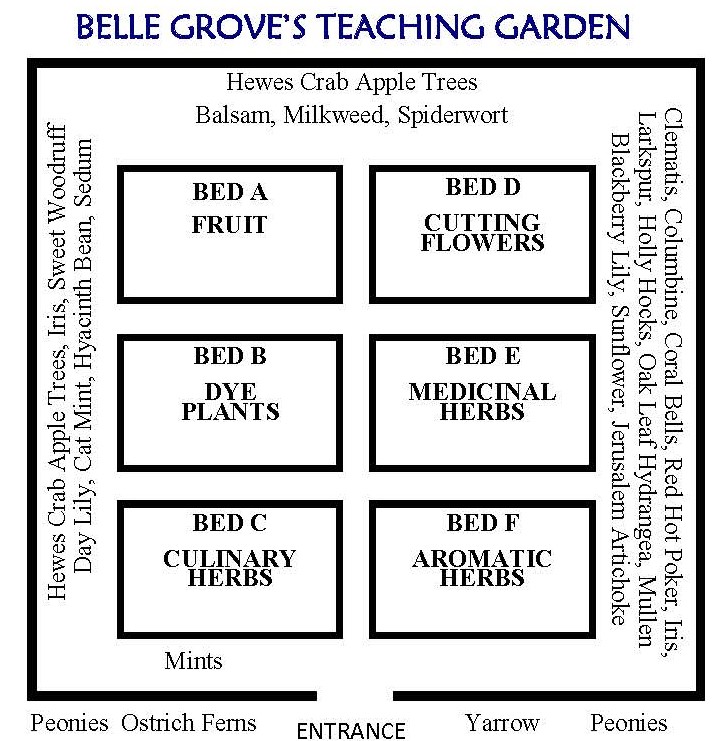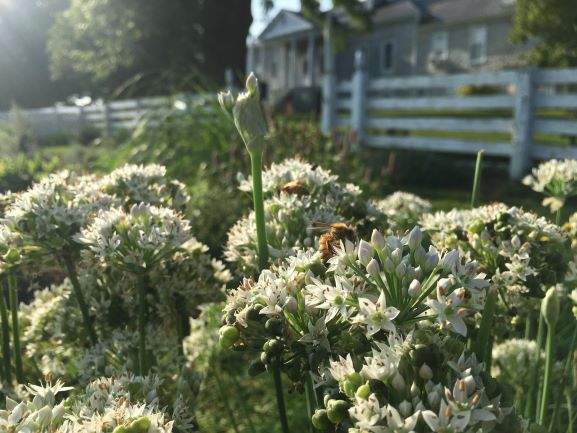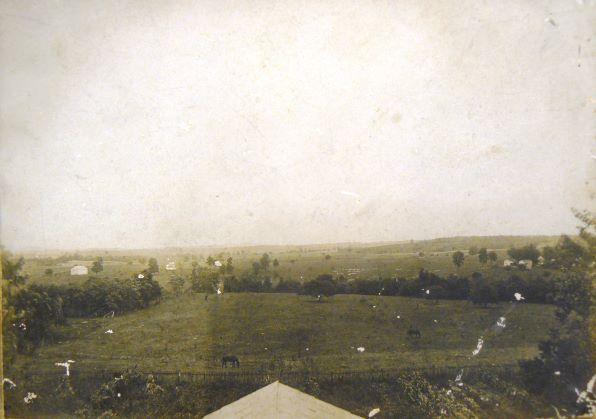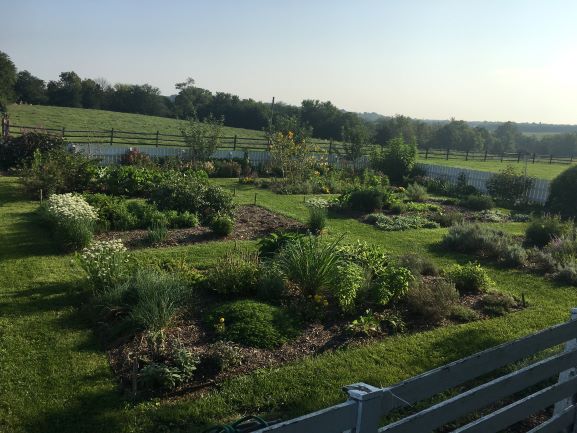Belle Grove's Teaching Garden
Designed and donated by The Garden Club of Virginia, Belle Grove’s is meant to demonstrate the garden that stretched across the entire lawn behind the Manor House (see photo at right). We call it a “Teaching Garden” because it provides an opportunity to learn about the cultivation and care of plants used in the early 19th century by the Hite family and their enslaved workers. There are three beds of herbs, one each of culinary, medicinal and aromatic; a bed of plants used in textile production including flax used for making linen and dye plants; a bed of berries; a bed of cutting flowers popular during the period. Hewes crabapple trees (also called Virginia crabapple) line the north and west sides of the garden and additional herbs and flowers are grown along the border. The entrance fence and finials are based on those found in an 1837 drawing of Belle Grove.
Belle Grove’s garden is lovingly maintained by a small staff and dedicated volunteers with guidance from the Northern Shenandoah Valley Master Gardeners Association. The Northern Shenandoah Valley Master Gardener Association's annual GardenFest on the first Saturday in June is held at Belle Grove and features educational activities, displays, and the Master Gardener plant sale and vendors where you can find many of the plants that are grown in the Belle Grove garden. For more information about the Garden, to become a garden volunteer, or to designate a donation to support Belle Grove’s Teaching Garden, please contact our staff.
Virginia Cooperative Extension Master Gardeners are at the Belle Grove Teaching Garden every Tuesday morning 7-9 a.m. They are delighted to share their knowledge! Stop by for a tour.
To view the index of plants in the garden, please click here.

Bed A: Fruit
Blackberries
Gooseberries
Raspberries
Rhubarb
Strawberries
Bed B: Textile and Dye Plants
Baptisia (Wild Indigo)
Cardinal Flower
Chives
Egyptian Walking Onions
Flax
Garlic Chives
Madder
Tansy
Woad
Bed C: Culinary Herbs
Basil
Borage
Bronze Fennel
Chives
Clary Sage
Comfrey
Dill
Horseradish
Lemon Balm
Lovage
New Jersey Tea
Parsley
Oregano
Red Sorrel
Rosemary
Sage
Sorrel
Summer Savory
Thyme
Bed D: Cutting Flowers
This bed is planted with a variety of seasonal annuals and perennials that could be used for bouquets and are also attractive to pollinators such as
Cornflower
Coreopsis
Icelandic Poppy
Iris
Larkspur
Salvia
Spiderwort
Zinnia
Bed E: Medicinal Herbs
Bee Balm
Borage
Candytuft
Chamomile
Comfrey
Costmary
Echinacea
Horehound
Horseradish
Hyssop
Lambs Ears
Rue
Southernwood
Vervain
Bed F: Aromatic Herbs
Artemisia “Silver King”
Bay Laurel
Germander
Lavender
Lemon Balm
Lemon Verbena
Rosemary
Rue
Sage
Wormwood
Yarrow





